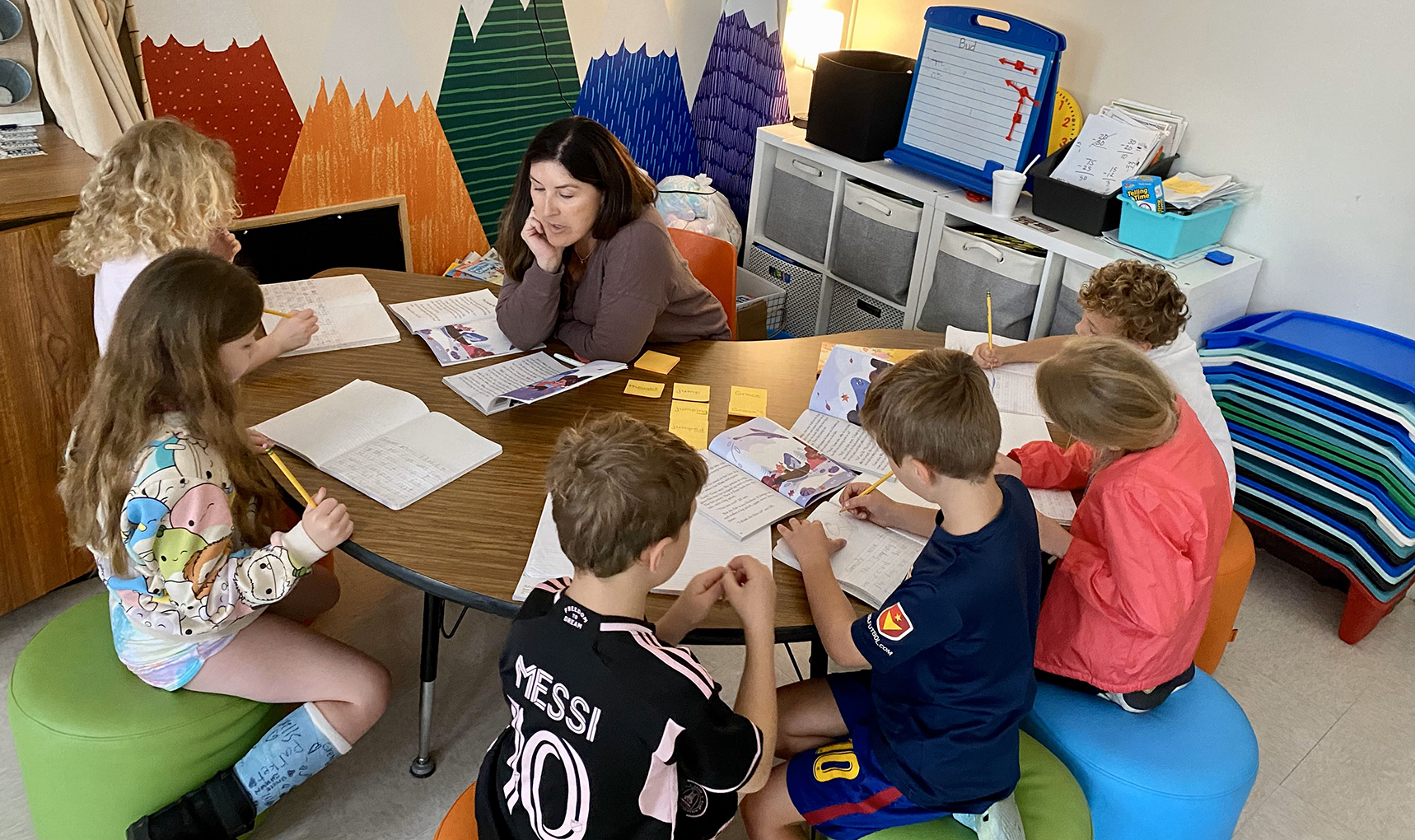By Kathy Beardsley
Kathy.beardsley@oldham.kyschools.us
This past summer, my students were not dreading coming to summer school. By integrating a popular yearly event from the Discovery Channel and hands-on science activities, students at Oldham County Middle School who attended the Summer Literacy Camp were in for a one-of-a-kind science and literacy experience.
While incorporating important practices from the Kentucky Academic Standards for Science students brought the beach to the classroom in an unforgettable and engaging investigation into all things sharks. For the struggling readers and writers that this camp strives to reach, “Shark Week” took on a whole new meaning. Many of my students attending the sessions did not have the opportunity or financial resources to travel to sandy vacation destinations, yet they had bragging rights that rivaled their peers, all while learning about these mysterious and sometimes dangerous creatures.
The start of the Summer Literacy Camp focused on determining misconceptions that many students and adults alike share in their knowledge about sharks using icebreaker activities. Students then picked a particular type of shark to research as they sought to answer their own questions about sharks and to better understand the similarities and differences among the many shark species.
Students worked individually and collaboratively to compile their information into a digital portfolio using the learning app SeeSaw. Using literacy-based activities such as analyzing and annotating a variety of articles and reflecting on high-interest video clips, students investigated the sad reality sharks face. As further proof, we analyzed and interpreted data tables and charts on population trends of shark species over the past several decades.
Students also thought critically and made global connections about the reasons for these changes due to human impacts and determined possible solutions to protect these keystone species. A keystone species is one that has a huge effect on an ecosystem, such as preventing overpopulation, and the predator/prey balance. If a keystone species is removed, the ecosystem would change drastically.
But the big hook in this summer learning experience was hands-on investigations and dissections of preserved shark specimens. As I reflect on my 13 years of teaching middle school science, I can easily say kids get really excited about dissection. When I hear other adults reflecting about their own memorable scientific inquiry experience, it usually involves dissection.
After being awarded a MAC grant for dissection materials and specimens in the fall of 2015, the most frequently asked question by my students for most of the school year was, “When are we going to dissect something?” The engagement and genuine interest of students, coupled with the awe of discovery during dissection week – which included dissecting flowers, arthropods and frogs – was unparalleled. The connections students made with their learning throughout the year, incorporating our units on cells, genetics, adaptations and human impacts, proved to be a most satisfying end to our academic year for both me and my 8th-grade students.
So when I decided to participate in this summer literacy opportunity, I knew what would draw the students in for high-engagement learning – even in the summer. Each student had the opportunity to dissect their own 26-inch to 30-inch dogfish shark. It’s a ratio unheard of in the normal school year, when large class numbers and limited budgets require two to four students per specimen.
With 12 students in the classroom for four, three-hour lab sessions, I was so excited to let these 6th-, 7th- and 8th-grade students take their time as they explored the major systems of a shark and practiced basic dissection techniques. I also enjoyed working with such a small group of students, giving as much teacher-directed assistance as needed in this smaller classroom setting.
As we compared the internal and external structure and function of the shark to humans and other vertebrates, students continued to compile their discoveries in their digital online portfolio for use even in the regular school year. Having these unique experiences with hands-on exploration and scientific inquiry will equip these students with confidence in themselves and a better understanding of a variety of scientific concepts and the natural world.
It was a learning frenzy in my summer literacy camp sessions and this time, sharks were the bait.
Summer Literacy Camp attendees had the following to say about their experience:
“Shark week was awesome and very fun and interesting! I didn’t know all the organs, like a heart, that a shark has.”
– Alana Rockwell, 6th grade
“I thought the sharks would be gross, but when we opened them up, they weren’t. I learned how a shark’s body works. We even got to see what they ate.”
– Madisyn Woods, 7th grade
“It was cool. I’ve never seen a shark up-close before, especially what they are like inside!”
– Salvadore Rameriz, 7th grade
“What I liked about Shark Week was learning about all the types of sharks and playing Shark Bingo. I also liked having a great teacher and I made new friends that helped me dissect the shark.”
– Marcello Neal, 6th grade
Kathy Beardsley is an 8th-grade science teacher at Oldham County Middle School. Starting her 14th year of teaching, she teaches life science and engineering and enjoys incorporating hands-on activities to make real-world connections for her students.



Leave A Comment